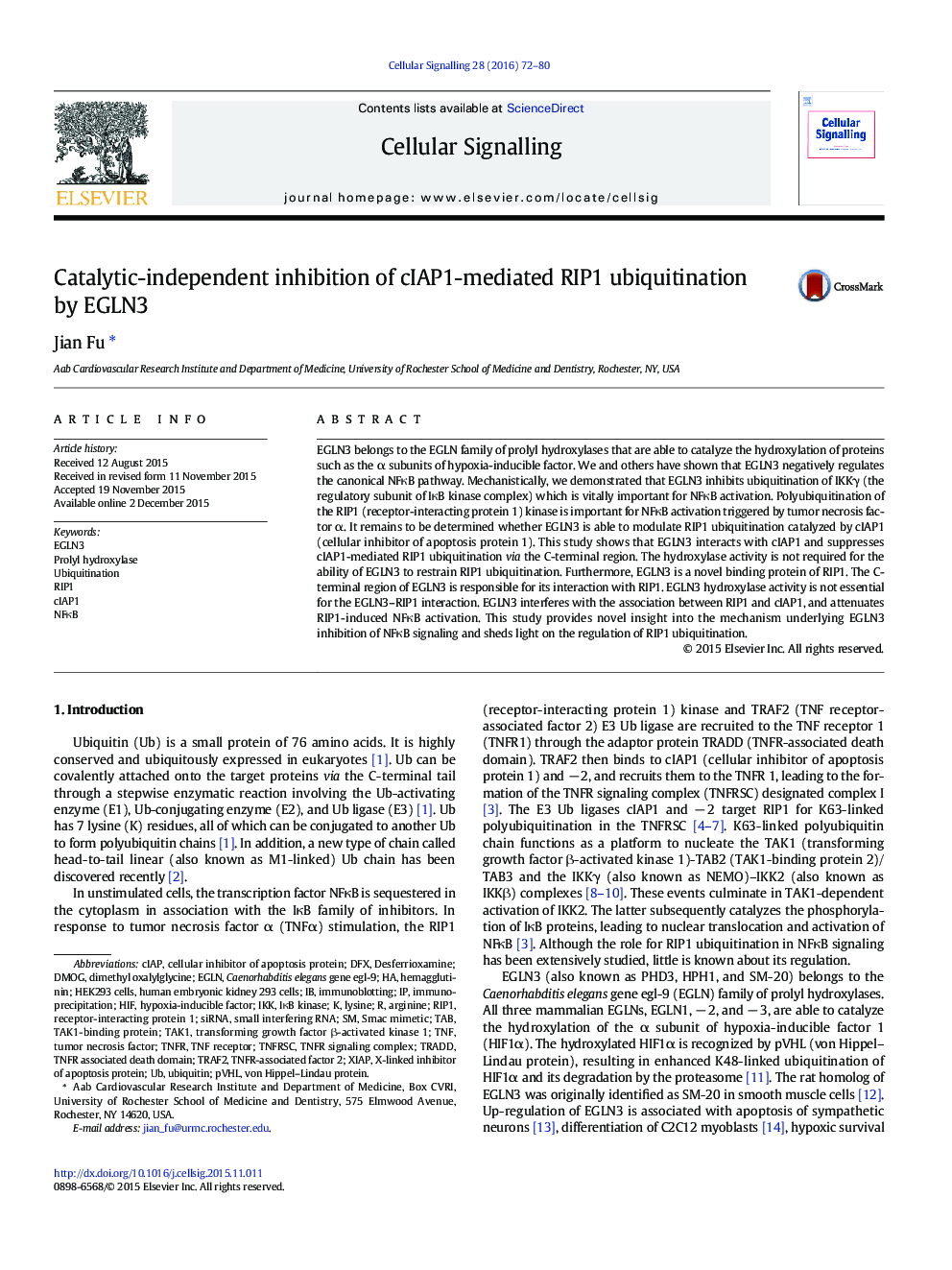| Article ID | Journal | Published Year | Pages | File Type |
|---|---|---|---|---|
| 10814781 | Cellular Signalling | 2016 | 9 Pages |
Abstract
EGLN3 belongs to the EGLN family of prolyl hydroxylases that are able to catalyze the hydroxylation of proteins such as the α subunits of hypoxia-inducible factor. We and others have shown that EGLN3 negatively regulates the canonical NFκB pathway. Mechanistically, we demonstrated that EGLN3 inhibits ubiquitination of IKKγ (the regulatory subunit of IκB kinase complex) which is vitally important for NFκB activation. Polyubiquitination of the RIP1 (receptor-interacting protein 1) kinase is important for NFκB activation triggered by tumor necrosis factor α. It remains to be determined whether EGLN3 is able to modulate RIP1 ubiquitination catalyzed by cIAP1 (cellular inhibitor of apoptosis protein 1). This study shows that EGLN3 interacts with cIAP1 and suppresses cIAP1-mediated RIP1 ubiquitination via the C-terminal region. The hydroxylase activity is not required for the ability of EGLN3 to restrain RIP1 ubiquitination. Furthermore, EGLN3 is a novel binding protein of RIP1. The C-terminal region of EGLN3 is responsible for its interaction with RIP1. EGLN3 hydroxylase activity is not essential for the EGLN3-RIP1 interaction. EGLN3 interferes with the association between RIP1 and cIAP1, and attenuates RIP1-induced NFκB activation. This study provides novel insight into the mechanism underlying EGLN3 inhibition of NFκB signaling and sheds light on the regulation of RIP1 ubiquitination.
Keywords
TNFRTNFR-associated factor 2TAK1-binding proteinTNFEGLNcIAP1RIP1XIAPTRADDDMOGpVHLTAK1DesferrioxamineTABTRAF2HIFDFXIKKcIAPIκB kinaseNFκBSmall interfering RNAsiRNAArgininevon Hippel–Lindau proteinImmunoblottingtransforming growth factor β-activated kinase 1ImmunoprecipitationHEK293 cellshuman embryonic kidney 293 cellsHypoxia-inducible factortumor necrosis factorLysinecellular inhibitor of apoptosis proteinhemagglutininX-linked Inhibitor of Apoptosis Proteinreceptor-interacting protein 1Prolyl hydroxylaseTNF receptorubiquitinationUbiquitin
Related Topics
Life Sciences
Biochemistry, Genetics and Molecular Biology
Biochemistry
Authors
Jian Fu,
